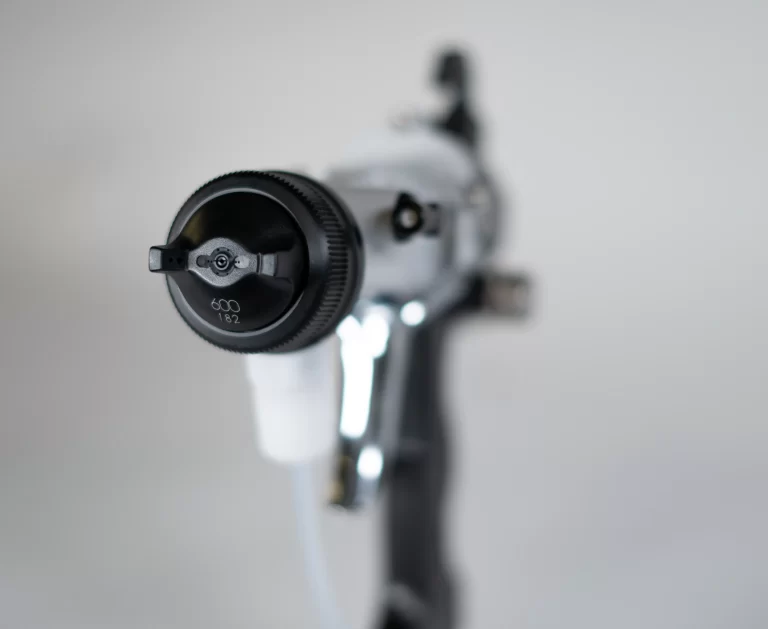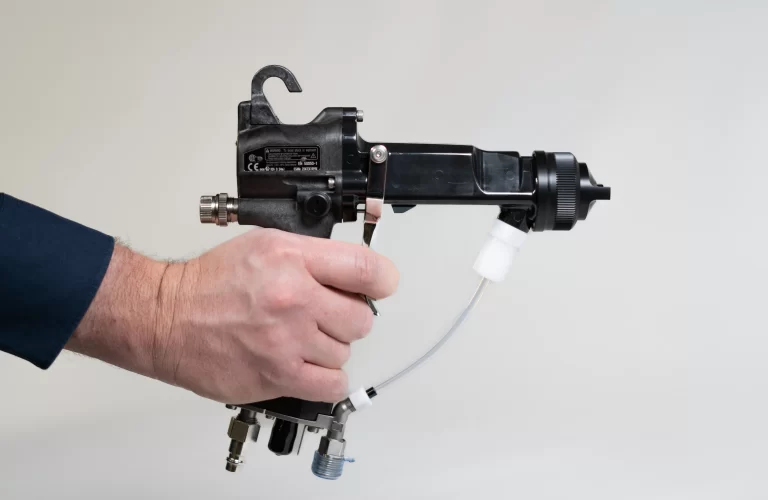
Electrostatic spraying in the wood industry: uniform, efficient and ready for the future
Achieve a clean and even paint result on wood, without paint wastage and with minimal overspray? That is the promise of electrostatic spraying. It has been the standard in the automotive sector for decades, but today it is also increasingly used in the wood industry. With the right substrate preparation, this technique offers unseen advantages - even when using water- and solvent-based coatings.
How does electrostatic spraying work?
In electrostatic spraying, paint particles are electrically charged. The workpiece must be grounded so that the charged paint particles move towards it. Result: a paint layer that adheres like a magnet, even around edges and hard-to-reach areas (wrap-around effect).
This technique works with:
- Solvent-based paints
- Water-based lacquers - provided the use of spraying equipment suitable for this purpose and a well-conducting set-up.
Wood and conductivity: a technical challenge
Wood is by nature a insulator, and thus not automatically suitable for electrostatic spraying. But in certain circumstances it can become sufficiently conductive - temporary and controlled.
How do you make wood suitable for electrostatic spraying?
- Moisture content of the wood
- Woods with a moisture content of 8 to 12 % can temporary are conductive.
- Species such as poplar, beech, alder and pine absorb moisture relatively evenly, making them slightly more suitable.
- Hardwoods (such as oak, maple or tropical wood) remain too resistant even at higher humidity.
- Conductive primers or additives
- A conductive primer provides a conductive bridge between paint and substrate.
- Some MDF boards contain carbon additives or metal fibres that make the surface conductive.
- Earthed suspension or tensioning
- Metal suspension hooks or conductive clamps can still ground the workpiece, even if the wood itself is insufficiently conductive.
Advantages of electrostatic spraying on wood
✅ Efficiency and quality
- Less overspray = less paint loss
- Even coverageeven in corners and on edges
- Fewer reworkings or update manually
✅ Environmental benefit
- Lower paint consumption = less waste
- Lower VOC emissions (for waterborne systems)
- Reduced air pollution in the spraying zone
What to look out for in practice?
Wood type & moisture content: At least 8 % moisture, better for beech, poplar, alder, pine
Guidance measures: Primer, clamps or additives essential
Product choice: Not every paint is electrostatically suitable - consult the technical data sheet
Equipment: Gun and pump must be matched to the paint system (solvent or water-based)
Applications in the wood industry
- Lacquered kitchen fronts
- Furniture panels in MDF or veneer
- Stairs and interior doors
- Bespoke interior construction

Electrostatic spraying offers real benefits for the woodworking industry, provided you get the process right. Moisture alone is not enough - conductive primers or adapted carriers are needed to guarantee consistent quality. Those who use this technique intelligently win in terms of efficiency, finish and durability.
